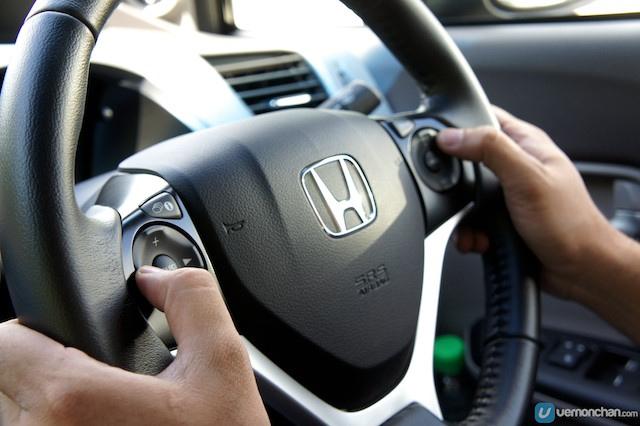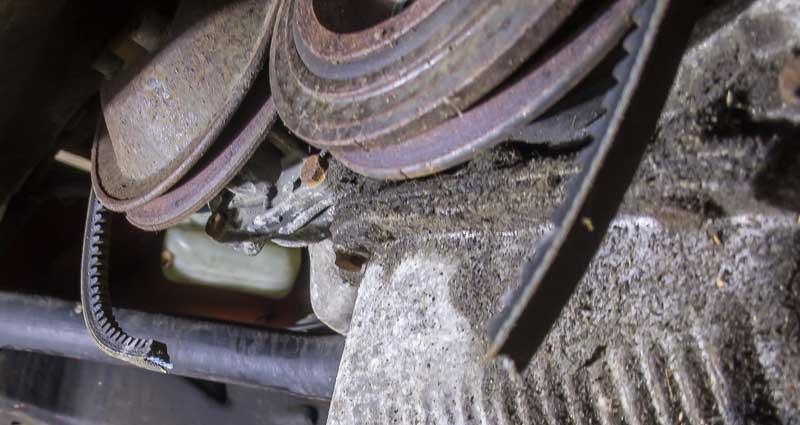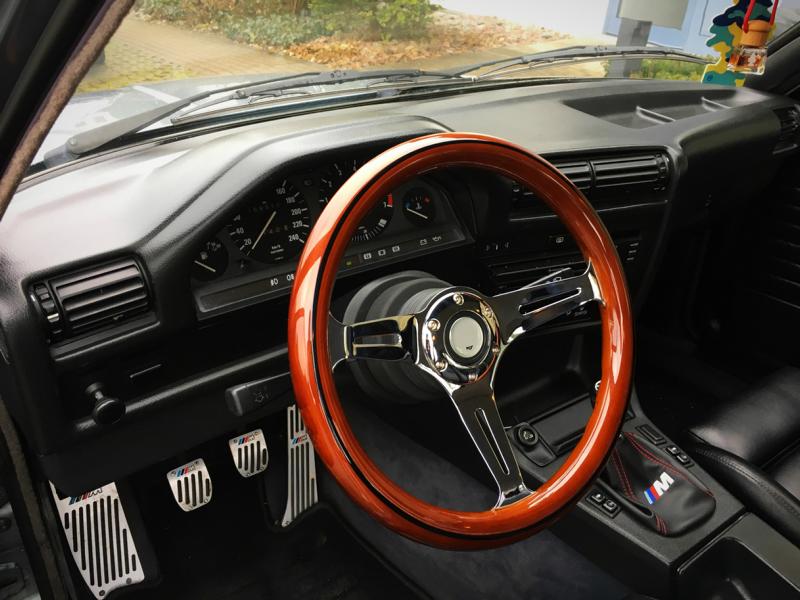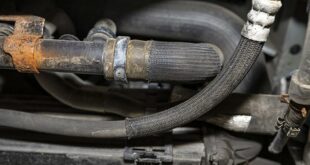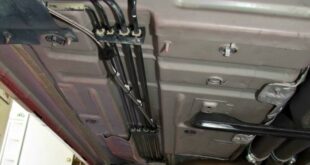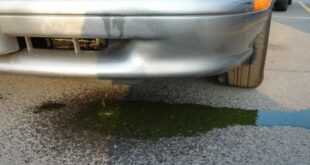Is the steering gear defective? We know the symptoms, we know how the change/repair works and we also know the costs involved. The steering gear converts the movements of the steering wheel to the tie rods and thus to the front wheels. It has one in particular supporting function, so that little effort is required to steer the vehicle. There are different characteristics that lead to different symptoms. The most common signs of a defect in the steering gear are one Puddle of oil under the car, Cracking when steering, when driving or stationary, a conspicuous "whirring“ (loud steering noises or noise formation) when steering and one heavy steering. Likewise, there is often poor straight-line stability, a missing (or one-sided) steering assistance and too much game on the wheel. If you now want to find out on your own whether the steering gear is damaged, you can first steer from the left to the right stop ("steer through") while stationary and here, as when driving, open cracking or beating pay attention to noises. Also Entries in the error memory (Steering angle sensor, servo motor, control unit, etc.) can occur. In addition, as already mentioned, you should Oil stains/drops under the car pay attention and the oil level keep an eye on the expansion tank.
Driving with a defective steering gear?
If the steering gear is defective, it can result in a limited controllability of the car, which increases the risk of an accident. This is a great danger for you and at the same time for other road users. Therefore, you should visit a workshop at the first sign. It can also happen that the servo pump runs dry as a result of the leak and has to be replaced. Because a defect often affects the track, it often results in increased wear on the tires or unevenly worn profiles. This results in follow-up costs.
What can a defective steering gear be confused with?
It is possible that the steering gear is not responsible for the problems at all. For example, poor directional stability can also be caused by a misaligned track. One Wheel alignment with following Tracking can remedy. In addition, a noticeably high play in the wheel area can also be caused by a damaged wheel bearings be caused. If the power assistance fails at the same time, then the cause can also be one smarter V-ribbed belts or V-belts. If electric power steering is installed and it fails, this can also be caused by a defective generator (Lima), partly by a weak battery, a defective fuse and errors resulting from this, for example from the steering angle sensor.
Causes and damage patterns – defective steering gear
Today, mainly three different types of steering gears are installed. these are hydraulic steering gear as a variant of power steering, electrohydraulic steering gear and electromechanical steering gear as a particularly complex version. The distinction is important because the nature of the cause of the defect depends on the type of steering gear. Except the general wear due to increased mileage (the result is often worn joints, too much play on the rack and/or housing, etc.) Corrosion because of moisture by about a defective steering boot lead to damage to the steering gear.
At the same time can through external influences such as accidents ("curb bumps") break individual components such as the steering rod and the teeth of the pinion or the steering rod and ensure that the steering gear no longer works correctly. Leaks can also occur in electrohydraulic or hydraulic steering gears Cracks in the housing as well as leaking Shaft seals be responsible for the hydraulic oil leaking out and the steering gear no longer working properly. In vehicles with an electromechanical or electrohydraulic steering gear, the failure of electronic components (Voltage supply, software error, control unit, cable, steering angle sensor, etc.) provide for typical signs.
Repair of the steering gear!
If there is damage to the add-on parts such as the steering boot, the axial joint, a tie rod end or the hydraulic line, then this can usually be the case be replaced individually. If the steering gear itself is defective (knocked out, leaking, etc.), then there is usually no avoiding a change. It is only occasionally possible to replace individual parts such as a damaged Simmerring. So-called “exchange parts” are often used. This means that a refurbished and used part is installed and, in contrast, the old part has to be sent in for later processing. This means that the costs are considerably lower than with a new part. At the same time, the work should always in a factory be carried out because the steering is particularly safety-relevant and a failure for the driver as well as for other road users is a danger.
The flow of work!
The specific process of the change varies depending on the vehicle. In general, one can assume that the underbody paneling and the front wheels have to be dismantled first. Subsequently, different add-on parts such as the Exhaust dismantled to make the steering gear accessible. Then the ball joints, the steering rod and finally the axle carrier are removed. Then the installation takes place in reverse order. Corrosion on the screws and connection lines of the exhaust or axle subframe may increase the effort.
How much does it cost to have a damaged steering gear changed in the workshop?
The cost of changing the steering gear can vary significantly. These depend on the construction of the vehicle, the costs for the spare parts and the specific effort required for the change. The cost of the material for a new steering gear is between 300 euros (used part/exchange part) and 2.000 euros (new part). In some cases, however, the costs can be much higher. Well-known manufacturers of spare parts are Koyo, Bosch, ZF, Maxgear, TRW, Spidan and Elstock. Installation and removal usually take between four and ten hours. The exact effort depends on how many components have to be dismantled for the change. Based on an hourly rate of 100 euros, this can result in labor costs of 400 to 1.000 euros. Overall, according to the calculation, the costs are in the range of 700 and 3.000 euros.
Function of the steering gear!
In the vehicles nowadays almost exclusively rack and pinion steering installed. These are available either with or without power assistance. The power assistance can be implemented in different ways. That's the easiest way hydraulic steering gear. It works hydraulically and without an electronic control unit. At the same time, it works as a function of engine speed because the servo pump is driven by the V-ribbed belt or V-belt. Nowadays often a electrohydraulic steering gear installed. The most important difference here is that a control unit can regulate the pressure within the system as a function of speed. At higher speeds, for example on the freeway, the driver has less support when steering, which is a "more direct steering' worried. At low speeds (e.g. when parking), the support is higher, so that steering can be done with little effort. This is the most complex and modern variant electromechanical transmissions. A servo pump and hydraulic fluid are completely dispensed with. Instead, the steering assistance is provided by means of Electric motor. Here, too, there is speed-dependent steering assistance and assistance systems such as a Lane keeping assist or Parking assistant can be used.
Conclusion
A defective steering gear is a significant safety risk for the driver and other road users. If the steering gear has to be completely replaced, then it will be expensive. In view of this, it is worth asking first whether it is possible to replace individual components. If it is not possible to change the components, then after a Replacement steering gear be searched. Significant money can be saved compared to a new part. Used parts from scrap are also an option for vehicles with a low market value. However, you should make sure that you only buy parts from reputable recyclers who do not have any accident parts on offer.
The following note is essential: For safety reasons, tuningblog recommends all repair, inspection and maintenance work exclusively to be carried out in a specialist workshop! Although our information is summarized to the best of our knowledge and belief, we cannot assume any liability for the content. All information is therefore "without guarantee".
Of course, that wasn't the end of it!
In this tuningblog category there are guides and instructions for common defects/repairs on the vehicle and for installing accessories/tuning parts. Our articles explain in a simple way common defects and the corresponding repairs, as well as explaining how the first signs of a defect become noticeable. In most cases, we also have initial clues to the repair instructions in our repair instructions approximate The costs of the pending repair are listed. The goal of our subcategory “Auto Repair Guide“ is to create a head start in knowledge for the next visit to the workshop with initial tips. This may save you from tedious troubleshooting and small things can perhaps be done directly on your own. The same applies, of course, to the installation of accessories/tuning parts. Here, too, we would like to help with the implementation with instructions and tips. There are many other posts on this as well. Below is an excerpt of the last and HERE there are all previous instructions:
|
Symptoms, repairs, changes, costs: defective cooling water hose! |
"tuningblog.eu" - we keep you up to date on the subject of autotuning and car styling with our tuning magazine and present you with the latest tuned vehicles from all over the world every day. It's best to subscribe to ours Feed and will automatically be informed as soon as there is something new about this post, and of course also to all other contributions.
 tuningblog.eu Your magazine about tuning the car
tuningblog.eu Your magazine about tuning the car

